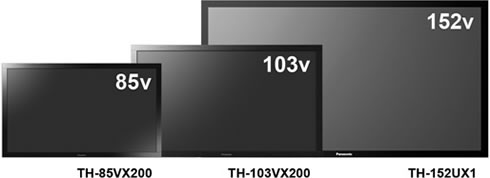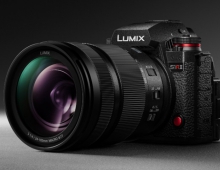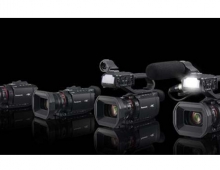
Panasonic to Launch Ultra-Large Full HD 3D Professional Plasma Displays
Panasonic will start taking orders for its professional-use ultra-large Full HD 3D plasma display panels (PDPs) on July 1, 2010.
The displays include the world's largest 152-inch model (4,096 x 2,160), as well as 103- and 85-inch models. Shipments will start first in the Japanese and American markets in autumn this year followed by other countries soon thereafter, the japanese company said. The company will also put these new models on display at InfoComm 2010 in Las Vegas, Nevada, from June 9.

Panasonic had launched a 103-inch Full HD model in 2006 and an 85-inch Full HD model in 2009. Now, the professional Full HD 3D PDPs for which Panasonic will accept orders provide Full HD 3D video on the world's largest scale for a direct-view display, as well as 2D displays.
To develop the new professional models, Panasonic has advanced its technologies employed in its VIERA Full HD 3D plasma televisions that were launched in the consumer market this year. The technologies include an industry-highest native contrast ratio (Dark contrast ratio for simultaneous display within a single screen) of 5,000,000:1 (Maximum value measured in Dynamic video mode for a white signal with a window of 4%) for overwhelming black reproduction; a high speed driving technology to achieve the PDP's full moving picture resolution; and a crosstalk reduction technology, a crucial requirement for producing clear and crisp 3D images. Panasonic's "Cross-talk reduction technology" enables double-image reduction by adopting newly developed phosphor materials. It also applies to Panasonic's Full HD 3D VIERA televisions for consumer use.
The newly-developed ultra high-speed drive technology achieves clear and highly detailed 3D video even on the ultra-large panels, while also, the newly developed built-in "professional quality engine" has doubled the color reproducibility with 30-bit processing in comparison to conventional models.
The 152-inch display can even project life-size images of people. The models have also been equipped with Panasonic's original function slots, "SLOT2.0," allowing various interfaces such as DVI and HD-SDI.
The new Full HD 3D Professional Plasma Displays can be used in 3D simulations, 3D showrooms or 3D games.
Panasonic has heavily invested in its 3D business and has shipped commercial and professional 3D products. This spring, Panasonic introduced its first lineup of VIERA Full HD 3D plasma televisions and Full HD 3D compatible Blu-ray Disc players to the Japanese, American, and European markets. Meanwhile, Panasonic will launch in August, a month ahead of its intended schedule, the world's first Twin-lens Full HD 3D camcorder. To further contribute to the production and spread of 3D contents, the company has also opened the Panasonic Hollywood Laboratory Advanced Authoring Center for the authoring and recording of 3D movies onto Blu-ray Discs.
Panasonic has also established the Panasonic 3D Innovation Center on June 3 in Japan for customers working in the 3D business.


Panasonic had launched a 103-inch Full HD model in 2006 and an 85-inch Full HD model in 2009. Now, the professional Full HD 3D PDPs for which Panasonic will accept orders provide Full HD 3D video on the world's largest scale for a direct-view display, as well as 2D displays.
To develop the new professional models, Panasonic has advanced its technologies employed in its VIERA Full HD 3D plasma televisions that were launched in the consumer market this year. The technologies include an industry-highest native contrast ratio (Dark contrast ratio for simultaneous display within a single screen) of 5,000,000:1 (Maximum value measured in Dynamic video mode for a white signal with a window of 4%) for overwhelming black reproduction; a high speed driving technology to achieve the PDP's full moving picture resolution; and a crosstalk reduction technology, a crucial requirement for producing clear and crisp 3D images. Panasonic's "Cross-talk reduction technology" enables double-image reduction by adopting newly developed phosphor materials. It also applies to Panasonic's Full HD 3D VIERA televisions for consumer use.
The newly-developed ultra high-speed drive technology achieves clear and highly detailed 3D video even on the ultra-large panels, while also, the newly developed built-in "professional quality engine" has doubled the color reproducibility with 30-bit processing in comparison to conventional models.
The 152-inch display can even project life-size images of people. The models have also been equipped with Panasonic's original function slots, "SLOT2.0," allowing various interfaces such as DVI and HD-SDI.
The new Full HD 3D Professional Plasma Displays can be used in 3D simulations, 3D showrooms or 3D games.
Panasonic has heavily invested in its 3D business and has shipped commercial and professional 3D products. This spring, Panasonic introduced its first lineup of VIERA Full HD 3D plasma televisions and Full HD 3D compatible Blu-ray Disc players to the Japanese, American, and European markets. Meanwhile, Panasonic will launch in August, a month ahead of its intended schedule, the world's first Twin-lens Full HD 3D camcorder. To further contribute to the production and spread of 3D contents, the company has also opened the Panasonic Hollywood Laboratory Advanced Authoring Center for the authoring and recording of 3D movies onto Blu-ray Discs.
Panasonic has also established the Panasonic 3D Innovation Center on June 3 in Japan for customers working in the 3D business.






















